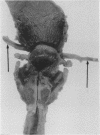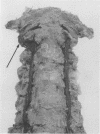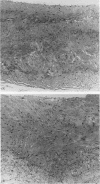Abstract
AIMS--To establish whether abnormalities in the course of the vertebral artery occur and whether they are relevant to arterial injury associated with head and neck movements. METHODS--Twenty vertebral arteries were carefully dissected at necropsy and abnormalities in course were noted, along with any other bony or cartilaginous cervical anomalies. The effect of head and neck movement on these vessels was studied before a detailed histomorphometric examination was undertaken on sections of the excised arteries. RESULTS--Five vessels had an abnormal course. One vessel entered the transverse foramina of the fifth cervical vertebra rather than the sixth, but was otherwise normal. In two subjects both vertebral arteries were abnormal in the upper cervical portion with, in each case, a straight left vertebral artery and a right vertebral artery with a deficient loop, closely applied to the atlanto-axial joint. Both of these subjects also had completely ossified stylohyoid ligaments and the arteries visibly stretched with modest head and neck movements. Histology revealed variable degrees of smooth muscle disarray in the tunica media of two of the arteries with loop deficiencies. The circumference of one of the straight arteries was smaller than expected but in all other measured histomorphometric parameters these vessels appeared normal. CONCLUSIONS--Vertebral artery loops are deficient in a number of subjects. This finding is important given the recently described biomechanical susceptibility of the vertebral artery to longitudinal extension and may explain the smooth muscle changes, in that this may represent attempts at arterial wall remodelling. Subjects with such loop deficiencies may be more susceptible to a variety of head and neck insults and such abnormalities should be sought at necropsy in subjects who die as a result of fatal vertebral artery injury.
Full text
PDF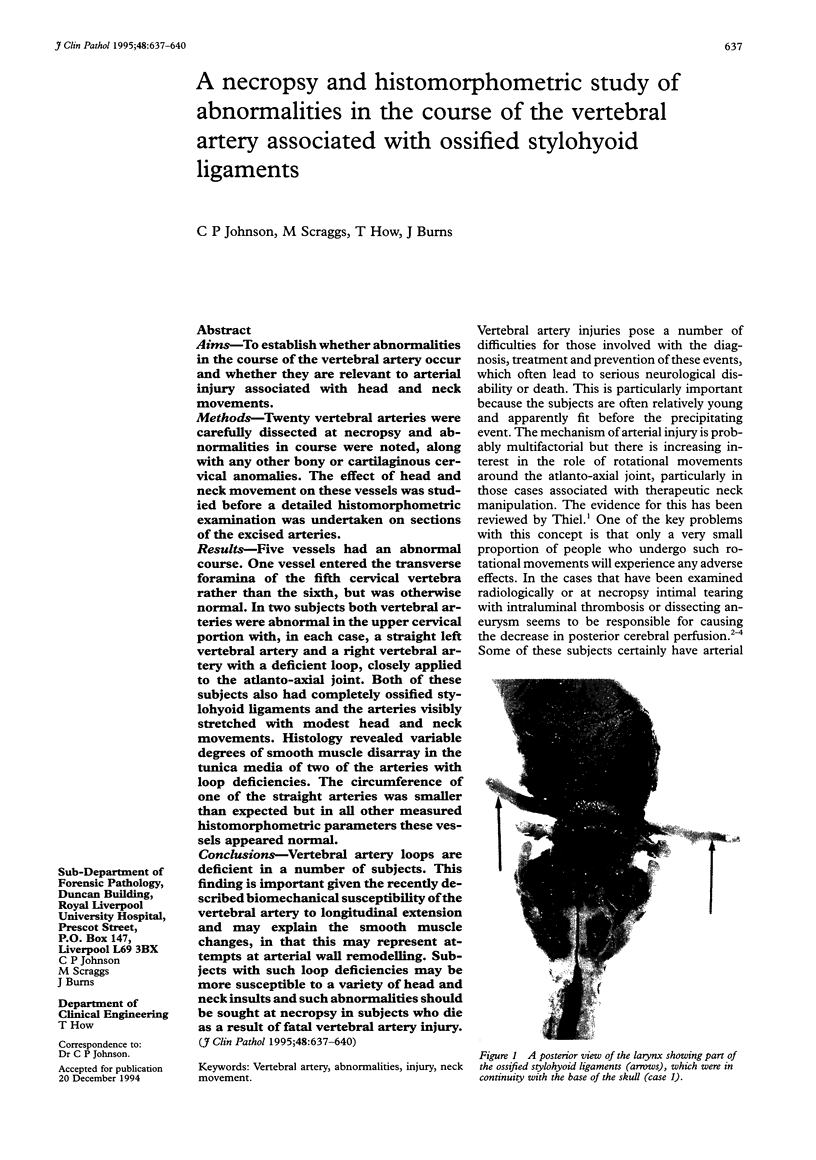
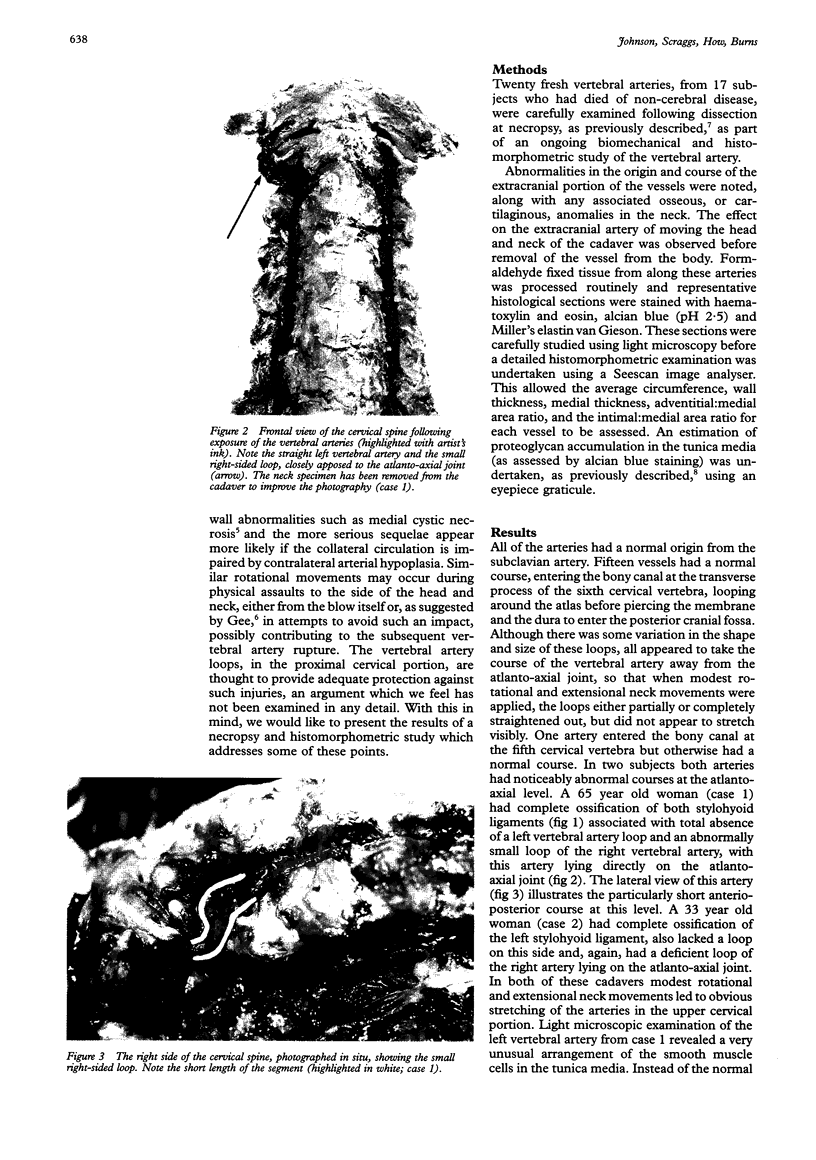
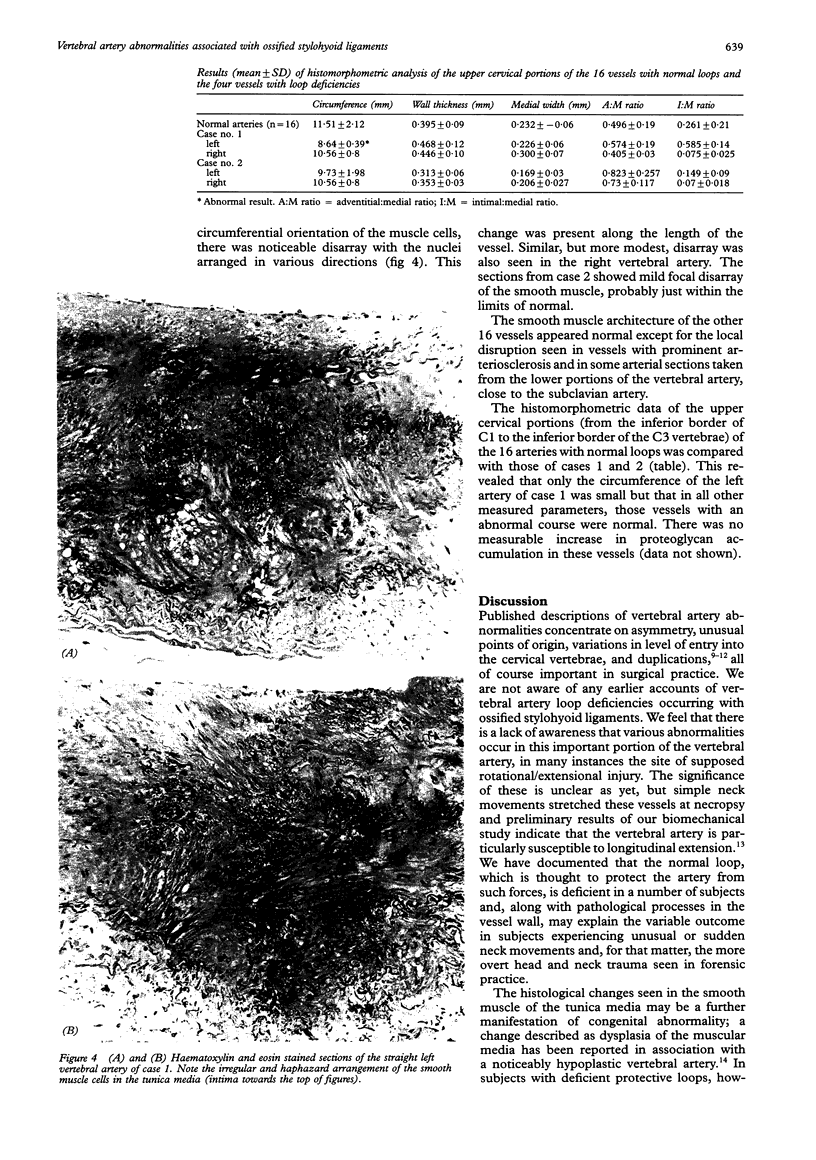
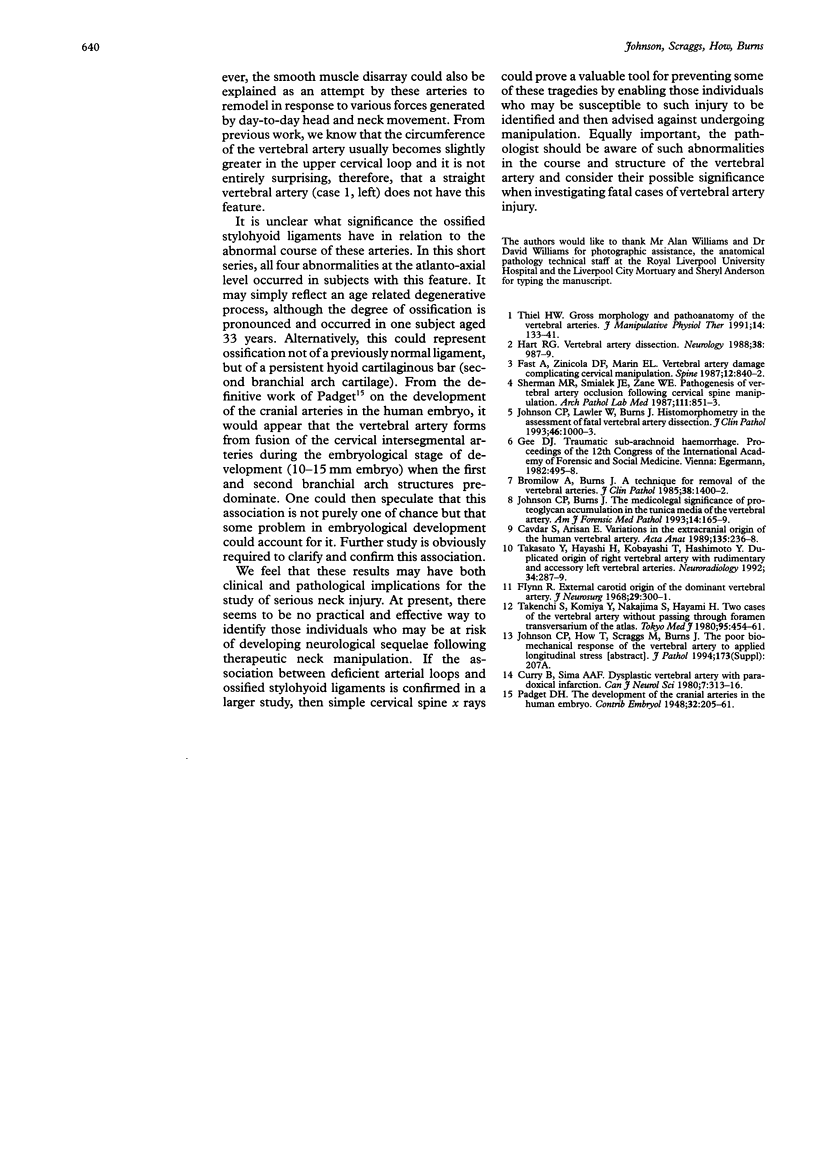
Images in this article
Selected References
These references are in PubMed. This may not be the complete list of references from this article.
- Bromilow A., Burns J. Technique for removal of the vertebral arteries. J Clin Pathol. 1985 Dec;38(12):1400–1402. doi: 10.1136/jcp.38.12.1400. [DOI] [PMC free article] [PubMed] [Google Scholar]
- Cavdar S., Arisan E. Variations in the extracranial origin of the human vertebral artery. Acta Anat (Basel) 1989;135(3):236–238. doi: 10.1159/000146760. [DOI] [PubMed] [Google Scholar]
- Curry B., Sima A. A. Dysplastic vertebral artery with paradoxical infarction. Can J Neurol Sci. 1980 Nov;7(4):313–316. doi: 10.1017/s0317167100022824. [DOI] [PubMed] [Google Scholar]
- Fast A., Zinicola D. F., Marin E. L. Vertebral artery damage complicating cervical manipulation. Spine (Phila Pa 1976) 1987 Nov;12(9):840–842. doi: 10.1097/00007632-198711000-00003. [DOI] [PubMed] [Google Scholar]
- Flynn R. E. External carotid origin of the dominant vertebral artery. Case report. J Neurosurg. 1968 Sep;29(3):300–301. doi: 10.3171/jns.1968.29.3.0300. [DOI] [PubMed] [Google Scholar]
- Hart R. G. Vertebral artery dissection. Neurology. 1988 Jun;38(6):987–989. doi: 10.1212/wnl.38.6.987. [DOI] [PubMed] [Google Scholar]
- Johnson C. P., Burns J. The medicolegal significance of proteoglycans in the tunica media of the vertebral artery. Am J Forensic Med Pathol. 1993 Jun;14(2):165–169. doi: 10.1097/00000433-199306000-00014. [DOI] [PubMed] [Google Scholar]
- Johnson C. P., Lawler W., Burns J. Use of histomorphometry in the assessment of fatal vertebral artery dissection. J Clin Pathol. 1993 Nov;46(11):1000–1003. doi: 10.1136/jcp.46.11.1000. [DOI] [PMC free article] [PubMed] [Google Scholar]
- Sherman M. R., Smialek J. E., Zane W. E. Pathogenesis of vertebral artery occlusion following cervical spine manipulation. Arch Pathol Lab Med. 1987 Sep;111(9):851–853. [PubMed] [Google Scholar]
- Takasato Y., Hayashi H., Kobayashi T., Hashimoto Y. Duplicated origin of right vertebral artery with rudimentary and accessory left vertebral arteries. Neuroradiology. 1992;34(4):287–289. doi: 10.1007/BF00588183. [DOI] [PubMed] [Google Scholar]
- Thiel H. W. Gross morphology and pathoanatomy of the vertebral arteries. J Manipulative Physiol Ther. 1991 Feb;14(2):133–141. [PubMed] [Google Scholar]



